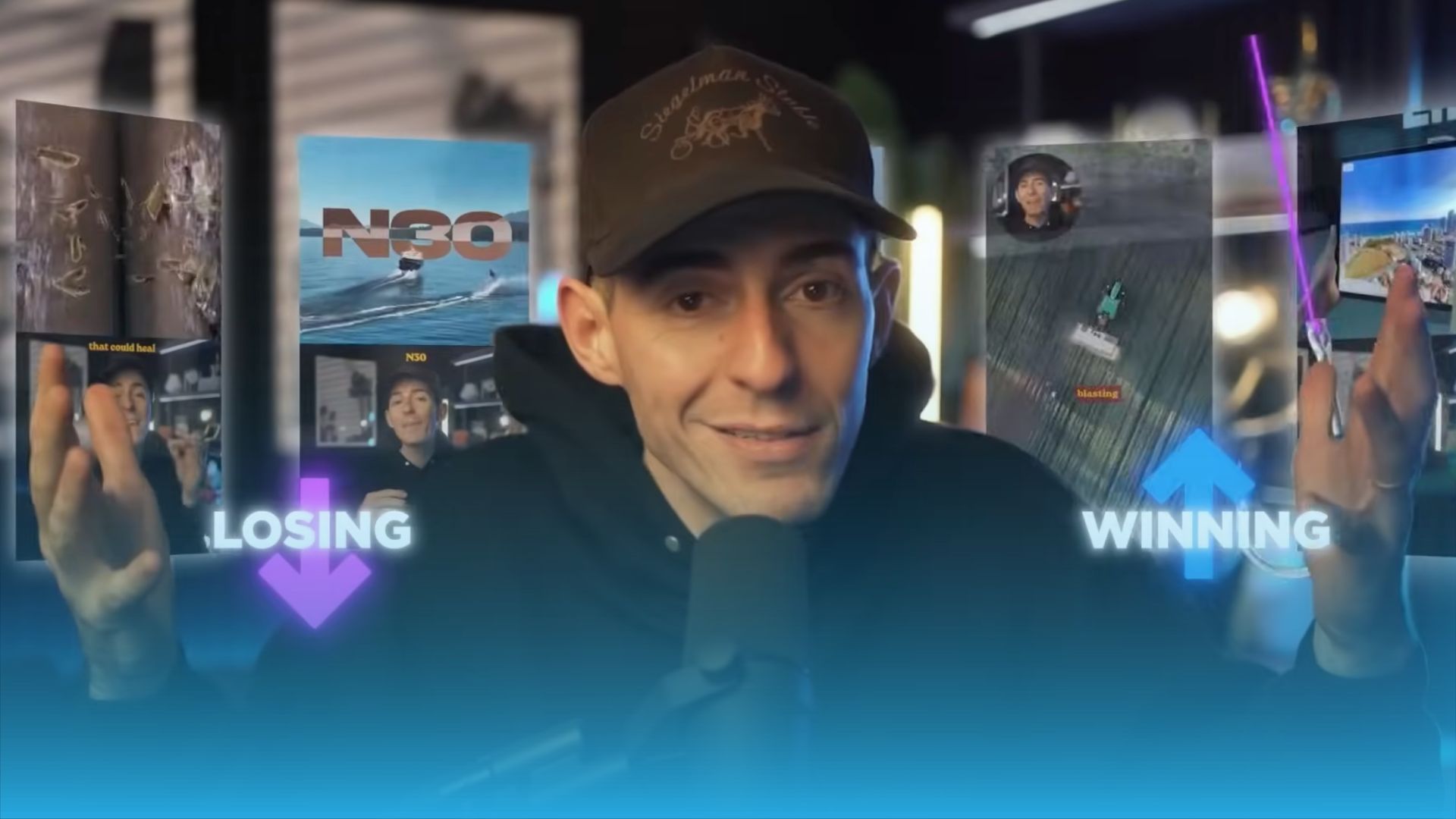
If you want your videos to perform better, you need to focus less on fancy editing and more on your hook, viral video hooks to be specific. I didn’t fully appreciate how powerful that advice was until I studied a breakdown by Kallaway on YouTube, who analyzed thousands of viral videos and discovered a pattern: Almost every winning video uses one of six simple hook formats.
Once I understood these formats — and the psychology behind them — I started thinking differently about content altogether. In this essay, I’ll walk you through the six hook types, why they work, and how understanding them can level up your own videos, whether you’re creating for fun or for business.
(This article is adapted from insights shared in the video “I Studied 100 Viral Hooks, These 6 Will Make You Go Viral” by Kallaway.)
Why Viral Video Hooks Matter More Than Anything
The first big takeaway is this: hooks aren’t just a cute opening line. They create what’s called a “curiosity loop.”
The curiosity loop happens when you introduce contrast — when you show people that what they believe might not be the full story. That gap between what they know and what you tease keeps them watching.
And you only have about five seconds to pull it off.
So Kallaway organized the six most effective types of viral video hooks into clear categories, each designed to quickly generate that contrast and curiosity. Here they are:
1. The Fortune Teller
This hook contrasts the present with a prediction about the future.
You might say something like, “This small gadget is about to change travel forever.” Or, “We’re witnessing the biggest shift in marketing history.”
The format works because our brains are wired to care about the future. When we hear that something is about to change, we instinctively want to know more.
How to use it:
- State what the current reality is.
- Hint at how it’s about to change.
- Tease the viewer into needing to know why.
[RELATED] How Jaden Young Turns Instagram into a Profit Engine for Entrepreneurs
2. The Experimenter
This hook shows how you tried something yourself — peer-to-peer, like a friend sharing a discovery.
Think: “I wore these smart glasses for a week — here’s what happened.”
Or, “This AI agent did my entire workday — let’s see if it actually works.”
It taps into curiosity by letting people live vicariously through your experiment.
How to use it:
- Set up a problem or question.
- Show how you tested a solution.
- Reveal what happened and why it matters.
3. The Teacher
Instead of showing an experiment, you explain a new method or insight you learned.
Examples: “Three marketing tactics you should steal from Aritzia.”
Or, “How I scaled an e-commerce brand to $1M in 12 hours.”
This builds authority while satisfying the viewer’s desire to learn something useful, quickly.
How to use it:
- Identify a common pain point.
- Share the new method you discovered.
- Break down why it works.
[RELATED] How to Grow and Monetize a YouTube Channel: Lessons You Won’t Hear Anywhere Else
4. The Magician
The magician hook is a visual “stun gun” — something unexpected that immediately grabs attention.
It might be a bold visual, a rhythmic sound, or a phrase like, “Check this out!” paired with a shocking clip.
Think of viral videos that start with something visually weird, then explain it after. Or videos where creators stack cups, draw fast, or show split-screen gaming footage — passive visual activity that holds attention just enough to make viewers listen.
How to use it:
- Open with a surprising or hypnotic visual.
- Combine it with an intriguing phrase or sound.
- Then flow naturally into your main content.
5. The Investigator
This one uncovers a secret or unknown fact.
Examples:
“This Japanese city at the base of Mount Fuji is hiding something.”
Or, “The secret reason this rapper sold out his brand in seconds.”
The contrast here is simple: You don’t know this yet — but I’m about to show you.
How to use it:
- Suggest that something hidden exists.
- Frame it against the viewer’s current ignorance.
- Reveal it piece by piece.
[RELATED] YouTube Masterclass with MrBeast, MKBHD, and Casey Neistat: New Rules for Growth
6. The Contrarian
This format is direct. You immediately state a bold opinion that clashes with popular belief.
For example:
“You’re branding your business all wrong — here’s what you should be doing instead.”
Or, “Everyone loves this product, but it’s massively overrated.”
Contrarians win attention fast because they’re not afraid to challenge the status quo.
How to use it:
- Identify a commonly held belief.
- Boldly present your opposite opinion.
- Back it up quickly.
Forget About Finding the Right Viral Video Hooks — Just Choose One
What surprised me most? Kallaway emphasized that any video idea can be adapted to any of these six formats. It’s about the angle you choose. For example, if you’re reviewing a new backpack:
- Fortune Teller: “This bag will change the way Millennials travel.”
- Experimenter: “I carried this bag across 7,000 miles — and found three major flaws.”
- Teacher: “The smartest way to pack a travel backpack.”
- Magician: Quick cuts showing dozens of backpacks flying open.
- Investigator: “The hidden design flaw no one tells you about.”
- Contrarian: “This popular backpack is totally overhyped if you use it every day.”
The real skill isn’t picking the perfect format upfront — it’s deciding which contrast or curiosity loop best fits the visuals and story you have.
The Secret to a Killer Hook: Alignment
Finally, Kallaway made a critical point: The difference between a 5,000-view video and a 500,000-view video often comes down to alignment.
You need all four elements to work together:
- Visual Hook: What people see in the first seconds.
- Spoken Hook: What you say aloud.
- Text Hook: What you write on-screen.
- Audio Hook: What music or sound supports the moment.
If your visuals and words don’t match, people get confused — and confused viewers scroll away.
Great hooks feel obvious, natural, and crystal clear. They create instant comprehension.
What I’m Changing After Learning This
I recently started batch recording videos for my YouTube channel. After studying this, I now want to start every video idea by asking two questions:
- What’s the strongest visual I have to work with?
- Which hook format creates the biggest curiosity loop for that visual?
If I don’t have a strong visual or an easy contrast to build around, I won’t force it. I’ll either rework the idea — or move on to something better.
Understanding these six simple hook types helped me realize that making people care immediately is far more important than the script and edit alone. By feeding their curiosity, I can pull my audience into the story.







